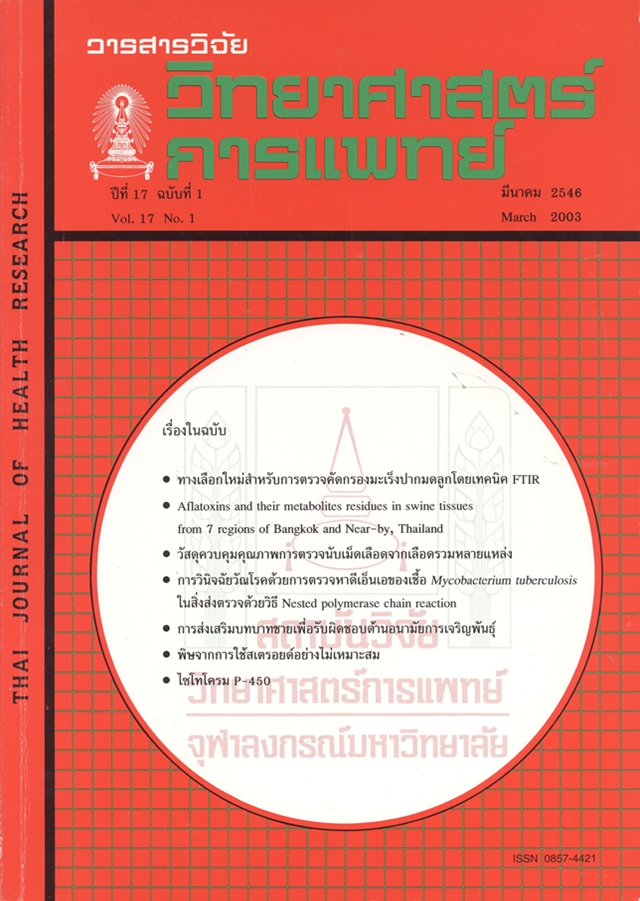Aflatoxins and Their Metabolites Residues in Swine Tissues from 7 Regions of Bangkok and Near-by, Thailand
Keywords:
aflatoxins, metabolites, residue, swine, liver, muscleAbstract
Six hundred and thirty samples of swine livers and muscles were collected from seven regions of Bangkok and near-by, Thailand during March 1998 to February 1999 by means of multistage random sampling for the detection of aflatoxins and their metabolites. Samples of 50 grams each were extracted and cleaned up by sep-pak florisil cartridge and quantitatively analysed by HPLC (High Performance Liquid Chromatography). 20.3% of the liver samples (64 out of 315) and 10.2% of the muscle samples (32 out of 315) were found to contain aflatoxin B1, B2, G1, M1 and R0. The increasing residual levels of aflatoxin B1 were detected in the livers with mean value of 0.518 ± 0.084 ppb whereas the decreasing residual levels of aflatoxin B1 were detected in the muscles with mean value of 0.036 ± 0.011 ppb. The levels of aflatoxin B1 residues in both tissues were lower than tolerance level (5 ppb) in human food. Samples collected in winter contained the highest aflatoxin residues with the highest frequency (21.4%) followed by samples collected in rainy season (19.0%) and summer (5.2%), respectively. Both winter and rainy season were related with the high incidence of aflatoxin producing moulds. Both liver and muscle samples collected from Bangsua region contained the highest aflatoxin B1 residues (0.854 ± 0.137 ppb) and the highest aflatoxin M1 residues (0.315 ± 0.083 ppb) with the highest frequency 29.2% (28 out of 96). The decreasing residual levels of aflatoxin B1 and aflatoxin M1 were detected from Thonburi region with mean value of 0.631 ± 0.126 ppb and 0.210 ± 0.026 ppb, respectively. The decreasing residual levels of aflatoxins were detected from Nonthaburi, Sumpuntawong, Dusit, Bangkoknoi and Chathuchak region, respectively. It can be estimated that Bangsua and Thonburi region of Bangkok could pose a high risk to human health through ingestion of aflatoxins residues in swine tissues. Therefore, the policy to decrease levels of aflatoxins and their metabolites in the swine feeds could be set up to avoid the risk of cancer.







